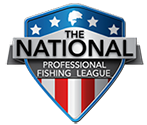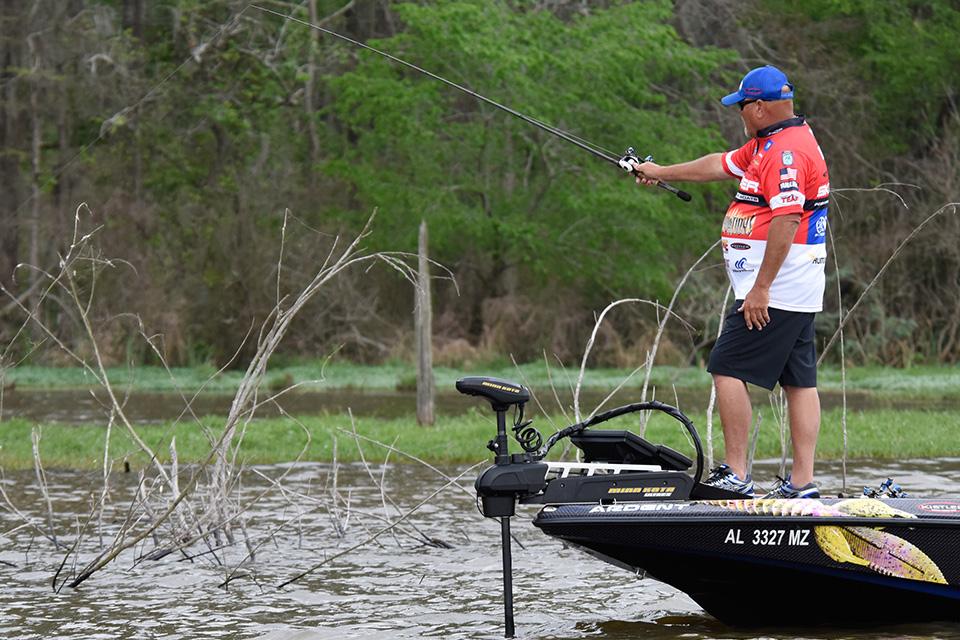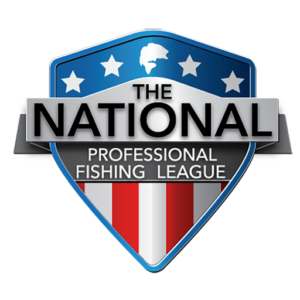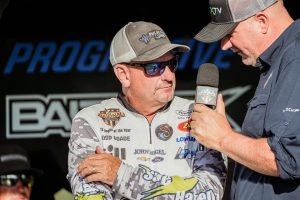Featuring Matt Herren | Photos BASS
Hometown: Ashville, Alabama
Technique: Flippin’ and pitching for shallow, pre-spawn bass
History: Dee Thomas developed the Flippin’ technique in California in the early 1970s. It’s a shallow water, fixed-line presentation method that allows you to put a lure on target in heavy cover without splashing the water. Pitching came along a little later. It’s an underhand casting method that gives you more range but is still extremely accurate and quiet. These are techniques that every bass angler should learn, and there are three basic principles behind them. First, there are always some bass in shallow water. Second, a shallow bass is a feeding bass. Third, the key to catching those bass is presentation.
Highlights: I learned Flippin’ when I was in high school and later learned the pitching technique. In 1999, I won the first Bass Federation qualifier I ever fished by Flippin’ and pitching jigs and lizards in just inches of water on Neely Henry Lake in Alabama. For 40 years, pitching and Flippin’ have been my go-to methods, and they’ve won more tournament prize money for me than all the other bass fishing techniques combined.
When: Flippin’ and pitching are always potentially productive. One of my favorite times to pitch and flip is in the pre-spawn, when the water temperature is between 57 and 62 degrees and the bass are moving into protected pockets and bays.
Where: This pattern works everywhere there are bass. The cover, water color or other factors may change, but this basic pattern works anywhere in the pre-spawn.
Lures: I like two basic baits for this pattern. The first is the 3/8-ounce Matt Herren Flippin’ Jig from Dirty Jigs in Black & Blue or Green Pumpkin. I fish it with either a chunk- or craw-style trailer, and I’m usually trying to imitate a bluegill with it. I like Black & Blue in dingy water and Green Pumpkin where there’s more visibility. With the Green Pumpkin jig and trailer, I’ll often touch the bait up with some chartreuse dye to make it look more like a bluegill. Bass hate bluegill in the pre-spawn! The other bait I like at this time is a 4- to 4 1/2-inch black and blue or green pumpkin creature bait on a 3/0 Owner Jungle Flippin’ Hook behind a 1/8- or 3/16-ounce Elite Tungsten sinker. I use the lightest weight I can get away with to be as quiet as possible, and I don’t peg the sinker because I want the most natural fall I can get.
Mods: With the jig, I usually trim the weedguard to just 1/4-inch past the point of the hook. I’ll also trim the skirt to just below the bend of the hook to make it shorter and more compact and to give it more flare.
Line: Unless I’m fishing in extremely heavy vegetation, I like 20-pound-test Gamma Edge fluorocarbon for my Flippin’ and pitching. I think it’s quieter than braid, and it’s definitely less visible. When I’m in heavy vegetation, I’ll use 65-pound braided line.
Rod: 7-foot-6 heavy action Kistler Helium casting rod
Reel: Kistler Chromium casting reel (7.3:1)
Basics: I’m targeting whatever cover the fish might use to protect a spawning bed—brush, stumps, grass, dock poles or anything else. I want to make short, precise presentations with my baits, and I want them to hit the water without making a ripple. Ninety-nine percent of my strikes come on the fall—before the bait can hit the bottom. The rod and line are so sensitive that I can sense the softest strikes; the bait just seems to disappear and go weightless. Sometimes you can see the line twitch or move to one side. When that happens, I set the hook. But if the bait does make it to the bottom, I let it sit there for four or five seconds … maybe longer if it’s in “the juice.” I think bass have become accustomed to a lure hitting the bottom and then hopping a couple of times before it leaves the area. I want to give them a difference look, so I let it sit there for as long as 10 seconds before I move it. You might be surprised at how often a bass will pick up a motionless lure.
Advanced: The real key to this method and pattern is boat control. I keep my Minn Kota Quest trolling motor set at an extremely slow speed and run it almost constantly when I’m in an area I want to fish. I’m not putting my foot on and off the button; it stays on so that I’m in nearly constant motion. I think that’s a lot less alarming to the bass than pulsing the motor on and off, on and off. I’m absolutely certain the bass know I’m there, but if I can avoid unnecessary or sudden movements, they don’t seem to care, and they’ll feed. I’ve learned this by feeding the fish in my pond every day. When I’m 50 yards from the pond and walking their way, I can see them start to get excited and swim to where I feed them. At 30 feet away, they look like piranhas, ready to tear into anything! It’s the same thing on the lake. Stay on the trolling motor or use the wind to quietly push you along when you’re Flippin’ and pitching. Poor boat control is the fastest and easiest way to screw this method up.





